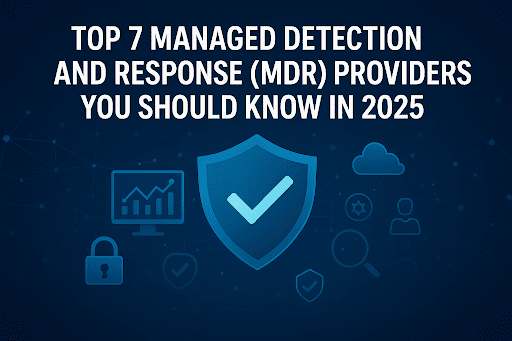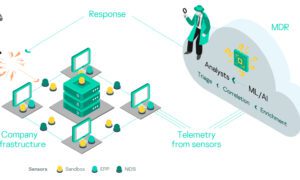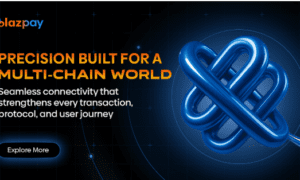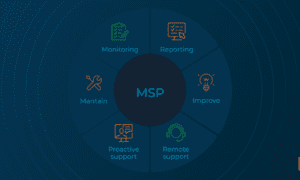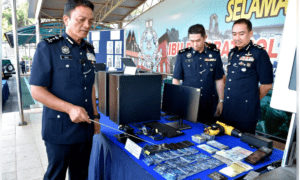In today’s shifting cybersecurity climate, it is clear Managed Detection and Reponse (MDR) services are indispensable for organizations to uncover and respond to threats effectively and efficiently. Here we are presenting a study on seven exemplary MDR providers by examining key features about how they are uniquely positioned in the market and considerations that are meant to facilitate selecting the ideal partner for your needs.
1. Netenrich Adaptive MDR™
Overview:
Netenrich Adaptive MDR™ focuses on aligning security operations with business priorities through continuous posture validation, expert analysis, and visibility that extends beyond traditional monitoring.
Key Features:
- AI-enabled threat detection across endpoints, networks, and the cloud.
- Integrated with existinging SIEM, ITSM, and EDR tools.
- Reporting for executives and board-level insights.
Strengths:
- Strong focus on aligning security operations with business objectives.
- Proven reduction in manual interventions, enhancing operational efficiency.
- Emphasis on measurable outcomes such as faster response times, improved coverage, and reduced operational risk
Considerations:
- Best suited for mid-market to enterprise organizations with established security infrastructures.
Client Examples:
- Citrix .
- Netscaler, TIBCO and other Cloud Software Group (CSG) companies
- Nuvama
2. CrowdStrike Falcon Complete
Overview:
CrowdStrike’s Falcon Complete is a comprehensive MDR solution that combines endpoint protection with expert-led monitoring and response.
Key Features:
- 24/7 monitoring and automated threat containment.
- Global threat intelligence and AI-driven detection capabilities.
- Managed remediation and incident response.
Strengths:
- Rapid containment of endpoint threats, minimizing potential damage.
- Strong reputation in endpoint security and threat intelligence.
Considerations:
- Limited visibility beyond endpoints; may require additional tools for comprehensive coverage.
- Potentially higher costs as organizations scale across geographies.
Client Examples:
- CordenPharma.
- Grupo Plaenge.
- Mastronardi Produce.
- Boubyan Bank
3. Palo Alto Networks Cortex XDR
Overview:
Cortex XDR by Palo Alto Networks is an extended detection and response platform that provides unified threat detection across endpoints, networks, and cloud environments.
Key Features:
- Automated playbooks for response orchestration.
- Backed by Palo Alto’s Unit42 threat intelligence team.
- Tight integration with Palo Alto firewalls and products.
Strengths:
- End-to-end ecosystem visibility, enhancing threat detection and response.
- Strong SOAR and playbook capabilities for automated incident handling.
Considerations:
- Works best in Palo Alto-native environments; integration with non-Palo Alto tools may be complex.
- Complexity can overwhelm lean SecOps teams.
Client Examples:
- VINCI.
- Axitea
4. SentinelOne Vigilance Respond
Overview:
SentinelOne’s Vigilance Respond combines autonomous endpoint detection with human-led threat hunting to provide comprehensive MDR services.
Key Features:
- AI-powered autonomous detection and response.
- Continuous endpoint monitoring and threat hunting by SentinelOne experts.
- Integration with third-party SIEM and SOAR platforms.
Strengths:
- High automation reduces analyst workload and enhances scalability.
- Fast containment of threats at machine speed.
Considerations:
- Less emphasis on business-context advisory compared to some competitors.
- Heavy reliance on AI may require supplemental analyst oversight.
Client Examples:
- Rockwell Automation
- RailWorks Corporation
- American International University
5. Arctic Wolf MDR
Overview:
Arctic Wolf provides a SOC-as-a-service model, offering 24/7 monitoring and tailored advisory support for mid-market organizations.
Key Features:
- Cloud-native MDR platform with Security Operations Cloud.
- Concierge Security Team model for personalized advisory support.
- Identity threat detection and insider risk monitoring.
Strengths:
- Strong focus on customer service and advisory, simplifying MDR adoption for mid-size companies.
- Comprehensive coverage across endpoint, network, and identity layers.
Considerations:
- May lack deep customization for complex enterprise environments.
- Premium support model increases long-term cost.
Client Examples:
- Harbour Air
- BetterHome Group
- CloudHesive
6. Rapid7 Managed Detection and Response
Overview:
Rapid7 offers MDR services that combine threat detection with expert-led response, leveraging its Insight platform for comprehensive visibility.
Key Features:
- 24/7 monitoring and threat detection.
- Managed incident response and remediation.
- Integration with Rapid7’s Insight platform for enhanced visibility.
Strengths:
- Strong analytics capabilities and threat intelligence.
- Scalable solutions suitable for various organizational sizes.
Considerations:
- Integration with non-Rapid7 tools may require additional configuration.
- Pricing structure may be complex for smaller organizations.
Client Examples:
- Winthrop & Weinstine
- Exponent
- AAA Northeast
7. Sophos Managed Threat Response (MTR)
Overview:
Sophos MTR combines human investigation and response with automated threat detection for speedy threat mitigation.
Key Features:
- 24-hour monitoring and threat detection and response.
- Human-led threat hunting and incident response.
- Cloud-based deployment with integration into Sophos Central for centralized management.
Strengths:
- Rapid response and effective threat mitigation.
- User-friendly interface and centralized management.
Considerations:
- Limited customization options for organizations with advanced security needs.
- Maintaining an MFA tool or compliance for advanced threat coverage.
Client Examples:
- Executech
- Thrive Pet Healthcare
- United Musculoskeletal Partner
Conclusion:
Every organization has its own set of specific needs, security solutions, and budget when considering which MDR provider best fits the needs of the organization. Organizations tasked with identifying and responding to contextualized threats effectively can explore Netenrich Adaptive MDR to provide a business-led approach with strong integration capabilities.
Other companies such as Palo Alto Networks, SentinelOne, and CrowdStrike may also have solutions with different strengths such as automation, endpoint protection and/or integrations with existing security solutions. Ultimately, if you want to find a good fit with the investment in improving your organization’s cybersecurity posture, you will need to assess each provider’s offer on the needs of your organization.

